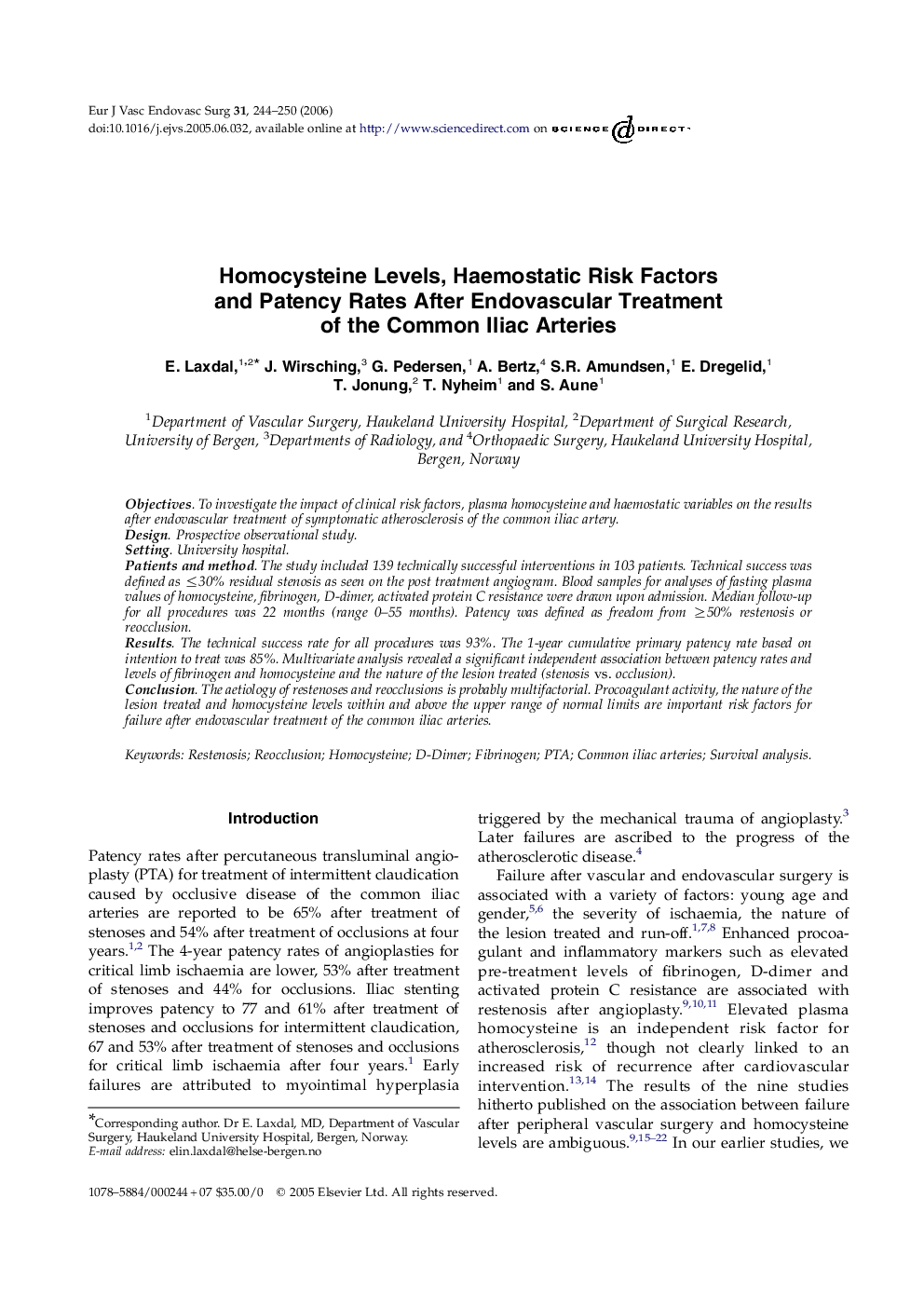| Article ID | Journal | Published Year | Pages | File Type |
|---|---|---|---|---|
| 2914995 | European Journal of Vascular and Endovascular Surgery | 2006 | 7 Pages |
ObjectivesTo investigate the impact of clinical risk factors, plasma homocysteine and haemostatic variables on the results after endovascular treatment of symptomatic atherosclerosis of the common iliac artery.DesignProspective observational study.SettingUniversity hospital.Patients and methodThe study included 139 technically successful interventions in 103 patients. Technical success was defined as ≤30% residual stenosis as seen on the post treatment angiogram. Blood samples for analyses of fasting plasma values of homocysteine, fibrinogen, D-dimer, activated protein C resistance were drawn upon admission. Median follow-up for all procedures was 22 months (range 0–55 months). Patency was defined as freedom from ≥50% restenosis or reocclusion.ResultsThe technical success rate for all procedures was 93%. The 1-year cumulative primary patency rate based on intention to treat was 85%. Multivariate analysis revealed a significant independent association between patency rates and levels of fibrinogen and homocysteine and the nature of the lesion treated (stenosis vs. occlusion).ConclusionThe aetiology of restenoses and reocclusions is probably multifactorial. Procoagulant activity, the nature of the lesion treated and homocysteine levels within and above the upper range of normal limits are important risk factors for failure after endovascular treatment of the common iliac arteries.
